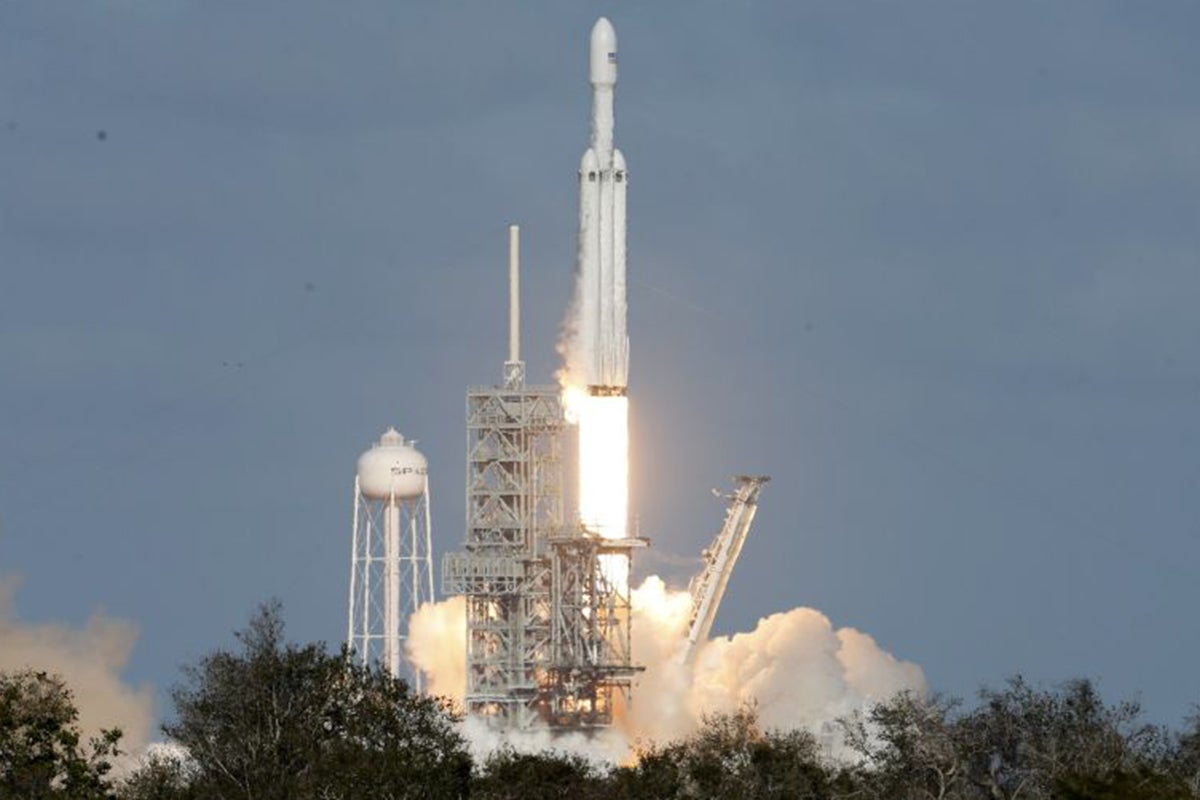Nasa chooses SpaceX to fly next generation space telescope
Nasa will trust a SpaceX rocket that’s already flying when it comes time to launch the next big space telescope

Your support helps us to tell the story
From reproductive rights to climate change to Big Tech, The Independent is on the ground when the story is developing. Whether it's investigating the financials of Elon Musk's pro-Trump PAC or producing our latest documentary, 'The A Word', which shines a light on the American women fighting for reproductive rights, we know how important it is to parse out the facts from the messaging.
At such a critical moment in US history, we need reporters on the ground. Your donation allows us to keep sending journalists to speak to both sides of the story.
The Independent is trusted by Americans across the entire political spectrum. And unlike many other quality news outlets, we choose not to lock Americans out of our reporting and analysis with paywalls. We believe quality journalism should be available to everyone, paid for by those who can afford it.
Your support makes all the difference.Nasa has officially selected SpaceX to launch the upcoming Nancy Grace Roman Space telescope, a next generation space telescope scheduled to fly in 2026.
Nasa announced the $255m contract, which covers launch and other mission-associated costs, on Tuesday. The contract specifies that the Roman telescope will launch in October 2026 from launch pad 39A at Kennedy Space Center atop a SpaceX Falcon Heavy rocket.
The Nasa announcement did not address why the space agency selected the Falcon Heavy launch vehicle rather than SpaceX’s larger Starship and Super Heavy booster launch vehicle, which both Nasa and SpaceX expect to fly well before 2026. Nasa is counting on SpaceX developing Starship and multiple variants in order to land astronauts on the Moon in 2025.
The Falcon Heavy rocket can lift between 57 and 64 tons of payload into low Earth orbit, whereas Starship, if and when it flies, will lift a payload of up to 150 tons into low Earth orbit.
The Nancy Grace Roman Space Telescope was first recommended by the United States National Research Council Decadal Survey committee, which addresses research priorities in astronomy each decade, in 2010, and was known then as the Wide Field InfraRed Survey Telescope, or Wfirst. The telescope was renamed in honor of the late Nancy Grace Roman, Nasa’s first chief of astronomy and such a strong advocate for space-based observatories she earned the sometimes moniker “mother of Hubble.”
The Roman telescope will actually use the same type and size of mirror as the Hubble Space Telescope, a 2.4-metre diameter mirror originally intended for a spy satellite but passed on to Nasa. Put to scientific use, the mirror will help Roman scan wide swaths of sky in the infrared to help scientists understand dark energy and discover new exoplanets, its extra wide field of view working synergistically with the deep and narrow view offered by the James Webb Space Telescope.
Join our commenting forum
Join thought-provoking conversations, follow other Independent readers and see their replies
0Comments